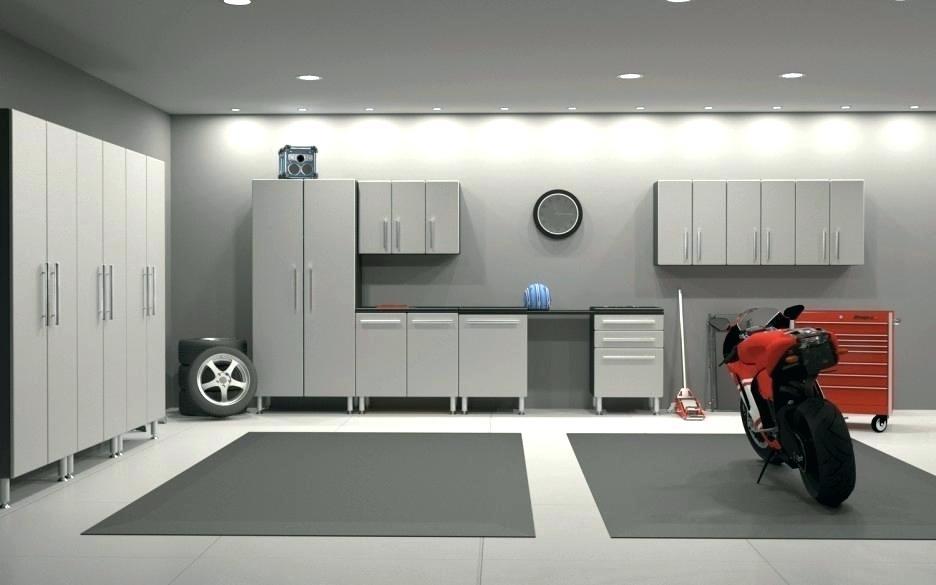What is the best material for garage walls?

Drywall is a common choice for interior walls of garages, but it is not always the best - it has little impact resistance and lowers moisture resistance. Within a few years, your garage interior walls may be full of nicks and holes, and the mold or both will turn black. You'll find a range of more durable products, some of which are comparable to refractory walls and some that are more durable.
Plywood and OSB
1/2 inch plywood sheathing on the outside of houses and roofs can also provide good hiding power utilities for your garage walls. This is a wall covering that you can hit repeatedly with two limbs, you don't have to choose where the hook hangs on the tool. Options range from sanding, knotless, cabinet-grade materials to practical outer jackets, with multiple veneers and oriented strand boards, a highly stable plywood replacement made from laminated shavings. If you like, all can be screwed onto the stud - just like plywood - and painted. They also help to absorb sound. Plywood has a neat appearance when painted. "Please note that it requires a few coats because it really absorbs the paint."
Many people like to ask how thick should Plywood be for garage walls? The exact answer is 3/8-inch, and it's the minimum plywood thickness. The International Residential Code specifies 3/8-inch plywood for sheathing walls with a standard stud spacing of 16 inches, if the siding is nailed to the studs through the sheathing.
In addition, they also ask What kind of plywood they should use for coverinh garage walls. Plywood is an engineered composite wood material made from thin sheets of wood veneer, or plies. The veneers are formed into layers and glued together. Unlike OSB, which has vertical threads, plywood is slanted at right angles. This gives the panels greater strength.
Fiberboard
Fibreboard is a practical material made of wood chips, which has various densities, and the most suitable type for garage walls is a hardboard, which typically has a 1/4 inch thick sheet. It is lightweight, easy to staple on studs, and has a smooth surface that you can draw or retain as it is.
Pegboard
Available in metal or wood paneling for garage walls, pegboard is a convenient way to keep the garage floor cluttered. You can use the pegboard as the wall itself, or place it on existing drywall with a cement strip. This will ensure that there is enough space behind the pegboard to hook.
The fiberboard and the pegboard are made of the same material and have the same thickness, but the pegboard is perforated with 1/4 inch holes at regular intervals. Use it throughout the garage or with hardboard to provide a convenient hole for the hook. If you install any of these materials on a layer of soundproof fiberboard, the noise you create in the garage will remain in the garage.
Metal Panels
Corrugated sheet metal is more expensive than other garage wall options, but it is flame retardant and remains good. In addition, the shiny appearance illuminates the dark space. It can be fixed directly to the wall studs or it can be fixed with drywall with strips.
Speaking of drywall, many people will want to know What is the best drywall for a garage? Drywall is the easiest and most economical covering for your garage ceiling. Use 5/8-in. -thick drywall if your trusses or rafters are spaced 24 in.
Vinyl Option
If you live in a humid climate or create humidity in the garage by spraying water, you may appreciate the water resistance of the individual vinyl panels. Unlike thin vinyl sheets that need to be bonded to dry or cement boards, these sheets are rigid and can be attached directly to the studs. They come in a variety of patterns, mainly for bathrooms, but you can easily use them in garages.
To insulate a garage, you need to a vapor barrier in garage interior walls. You're building a wall. Maybe you're putting on an addition or finishing off your basement or maybe you are just about to undergo a major renovation that requires taking the existing wall down to the studs.
Besides, there are 5 types of iInsulation you can use for garage walls. Insulating a garage makes sense if you're planning to heat the space. When it comes to choosing the best material for garage walls you can use the same types of insulation used on the rest of the house, but some are better than others,
These panels are made of medium density fiberboard (MDF) with overlapping layers that look a bit like vinyl siding. They can be attached to drywall, masonry or dowels, and the slats provide ample opportunity to connect hooks and shelves.
Did this article helpful? Share with us your ideas and leave your comment below.

